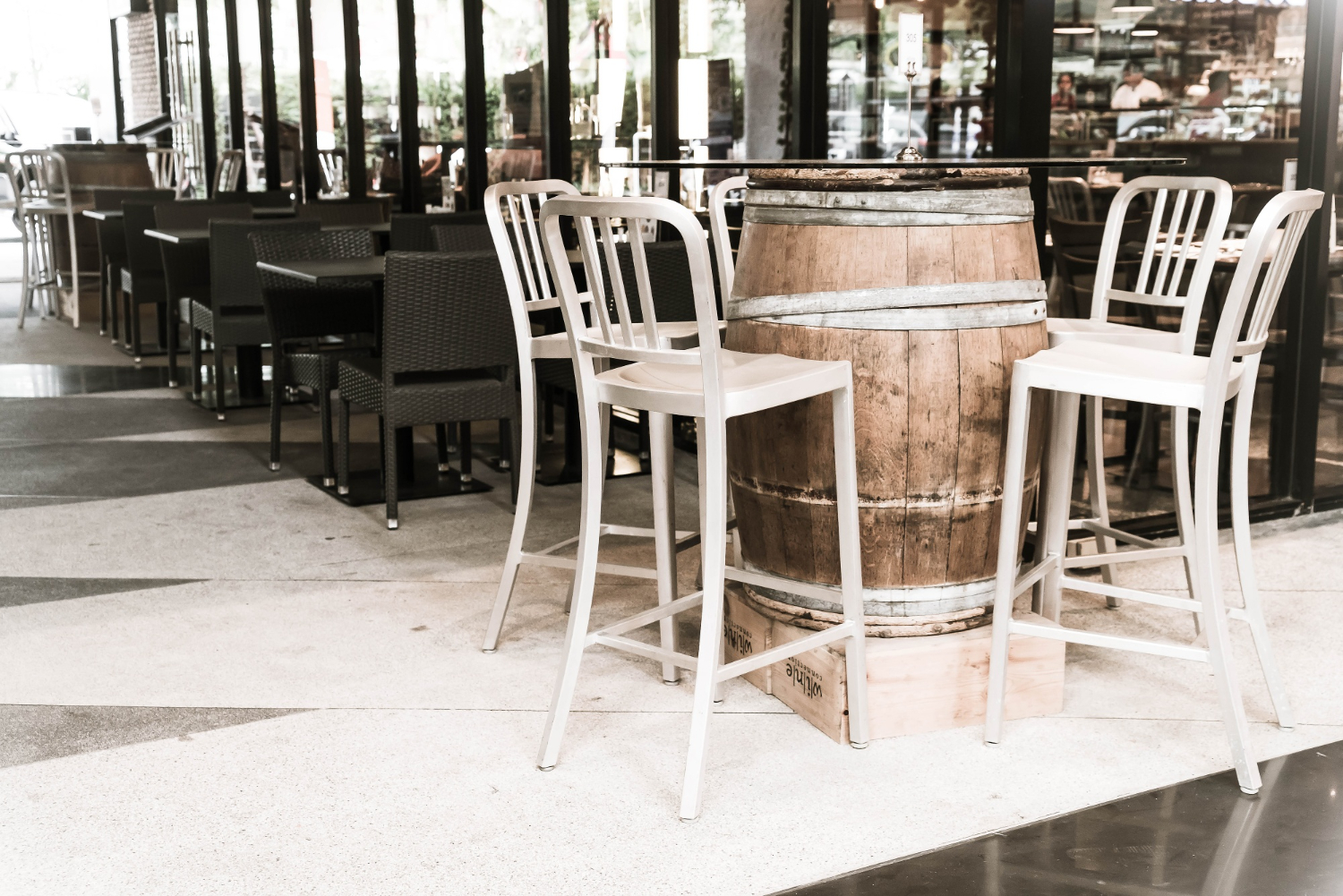
How and where people sit in a restaurant makes a huge difference in their dining experience. Not only does the seating have to be comfortable and accommodating, but it also must fit in with the rest of the atmosphere and aesthetic. Fortunately, restaurant seating solutions are more diverse and comprehensive than ever before.
Setting the Scene
Seating is a major factor that can influence a customer's perception of a restaurant before they even try the food. For example, if the tables and chairs don't match the vibe of the establishment, they may wonder if the food doesn't match, either. Overall, guests have certain expectations when entering a restaurant, and seating heavily contributes to those expectations.
Even the layout of restaurant seating matters because it affects how people can move through the space. If the seats are too close together, it makes it harder for guests (and waitstaff) to get in and out. If the seating is too spread out, it could affect the restaurant's ROI as the table arrangements may limit profitability by the number of seatings.
Meeting Expectations
During and even after the meal winds down, seating contributes to the entire experience. If customers want to sit and chat for a while, they need comfortable seats in which to do that. Ultimately, there are two main types of seating options in a dining room, booths or tables. In many cases, a business can utilize both for a better return. Each option has its pros and cons, so it's imperative for operators to weigh them before making a final decision.
Booths
As a general rule, booths are ideal for restaurant guests who look for an element of coziness and comfort when dining. Booths can be plush and thick, providing closeness with other members of the dining party that a table cannot lend. Booths can also allow operators to accommodate larger numbers of customers, and it's for these reasons that booths are often so common in establishments like diners.
The main drawback of booths is that they can be hard to get in and out of, and it can be harder for waitstaff to serve dishes to each guest. As a rule, booths work well for two, four, or six people, but they can be too cumbersome for more than six people unless they're in unique shapes like circles.
Free Standing Tables
Free standing tables are highly versatile because they come in a wide array of shapes and sizes. Restaurants can use square, rectangular, or circular tables to adjust the seating capacity or layout accordingly. That said, the chairs must also match the aesthetic of the table. Tables can also work for any number of people, provided they're the right size. Smaller tables can work for one or two guests, while larger versions can work for groups of six, eight, 10, or 12 people.
The main drawback to free standing tables is they may not provide the warm and cozy experience that a booth can provide, which is why many operations will opt to employ both styles of seating.
How to Determine What Works Best for You?
Realistically, operators may decide to use a combination of tables and booths or tables of different sizes and shapes. However, before purchasing anything, it's crucial to consider the following elements:
Dead Zones: Just because a table can fit in a space doesn't mean it should. Examples can include areas next to the bathroom, those next to the kitchen, and those next to the front door. While there's not a defined buffer zone, operators should keep these spaces clear as much as possible for operational efficiencies as well as the customer experience.
Seating Capacity: The number of seats matters in a restaurant because it can affect the business' bottom line. The more people who can sit down, the more profits a restaurant can make. However, operators must also consider how long a group stays and eats. If the place is at capacity, other guests may not want to wait too long for a table. Selecting the right number of seats is a balancing act between profit and other factors like diner experience and operational flow.
Flow: Guests need to be able to get in and out of their seats easily without disrupting another group. Similarly, waitstaff must also be able to move around to serve dishes and bus tables as necessary. When considering the "flow" of a restaurant, operators must consider where people are likely to move and in which direction. For example, waitstaff will be coming and going from the kitchen, while guests will be visiting the bathrooms. If the restaurant has any self-service stations, guests need to be able to reach them freely without obstacles.
Product Focus: Atlanta Booth
 From elegant cafés to quick-service cafeterias, Atlanta Booth has seating options for every need. With a broad selection of table tops, chairs, and booths, operators can customize their seating area to maximize profits and guest accommodations. The variety of options also gives managers more flexibility, both with the layout itself and whether the seating solutions will fit with the atmosphere.
From elegant cafés to quick-service cafeterias, Atlanta Booth has seating options for every need. With a broad selection of table tops, chairs, and booths, operators can customize their seating area to maximize profits and guest accommodations. The variety of options also gives managers more flexibility, both with the layout itself and whether the seating solutions will fit with the atmosphere.
Seating matters and Atlanta Booth has the best options for restaurants of all sizes. The team at P3 Reps is here to help you determine what might work best in your dining room, so schedule time with one of our experts to learn more or download our tabletop tip sheet below t





